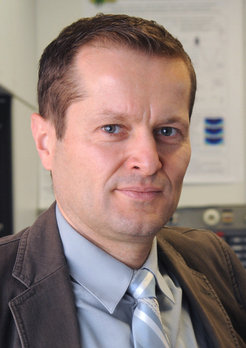Russian Academy of Sciences elects Professor Ferenc Krausz as Foreign Member
The Hungarian physiscist is honoured for his pioneering contributions to the field of attosecond physics.
For his pioneering work in the field of Attosecond Physics, the General Assembly of the Russian Academy of Sciences (Moscow) has elected Professor Ferenc Krausz, Director at the Max Planck Institute of Quantum Optics in Garching and Chair of Experimental Physics at the Ludwig-Maximilians-Universität (LMU Munich), as a foreign member. Founded in 1724 under Tsar Peter the Great in St. Petersburg, the academy is now the most important research organization of the Russian Federation. Since its founding the academy has given this distinction to very outstanding scientists, in recent times for example to Professor Wolfgang Ketterle (Massachusetts Institute of Technology, Boston, USA) and Professor Ahmed Zewail (California Institute of Technology, Santa Barbara, USA). “I feel very honoured by this distinction and regard it as a mission to further strengthen the very fruitful scientific cooperation between our countries”, Professor Krausz comments.

Born in Mór (Hungary) in 1962, Ferenc Krausz studied electrical engineering at the Budapest University of Technology and theoretical physics at the Eötvös-Loránd University in Budapest. In 1991 he received his doctoral degree in Quantum Electronics at the Vienna University of Technology, where only two years later he received his habilitation. In 1999 he was appointed full professor at the Vienna University of Technology and in 2000 he became director at the centre for "Advanced Light Sources". In 2003 he was offered the position of director at the Max Planck Institute for Quantum Optics, where he leads the "Attosecond Physics" Division. In 2004, he took over a Chair of Experimental Physics at the LMU Munich.
Professor Ferenc Krausz is recognized as the founder of the field of attosecond physics. In 2001 he succeeded in generating light pulses in the attosecond domain (an attosecond is a billionth of a billionth of a second) for the first time. The application of these ultrashort pulses for the observation of electrons inside atoms in 2002 was celebrated by the scientific journals Nature und Science as one of this year’s 10 most important achievements in science. In 2003, he developed a laser which, using a new style of mirrors, generated light pulses consisting of only a few wave cycles with perfectly controlled waveforms for the first time. The high-intensity fields of theses femtosecond pulses exert forces on electrically charged elementary particles (electrons or protons) that are comparable to intra-atomic forces.
The main topic in the field of attosecond physics is the development of new laser techniques that make it possible to observe the motion of electrons in atoms, molecules and solids with sub-atomic resolution in space and attosecond resolution in time. These measurements have already brought amazing new insights into atomic and solid state physics.
In order to explore the potential of attosecond physics for practical applications, Prof. Krausz initiated in 2005 the founding of the Cluster of Excellence “Munich-Centre for Advanced Photonics“ (MAP). In this research network, which comprises three universities, four Max Planck Institutes and the Siemens Company, new coherent light sources and secondary light-driven particle sources are being developed, whose special properties will improve medical diagnosis and therapies. Medical applications will also be the focus of the succeeding project, the Centre for Advanced Laser Applications (CALA) which is going to be constructed on the research site Garching in the next years. Here, the development of lasers generating extremely short intense light pulses is pursued. These lasers will be the basis for new and very brilliant X-ray facilities which will make it possible to discover cancer tissue at a very early stage. The new laser technologies will also lead to new compact sources for particle rays – protons and carbon ions –, which have proved to be very efficient for the treatment of a certain kind of tumors.
Professor Krausz has been the recipient of numerous scientific awards and prizes, e.g. the Gottfried Wilhelm Leibniz Prize of the Deutsche Forschungsgemeinschaft in 2005. In 2006 he was presented with the Quantum Electronics Award of the IEEE Laser and Electro-Optics Society as well as with the British "Progress Medal" of the Royal Photographic Society. In 2011 he has received the "Verdienstkreuz am Bande" (order of merit) of the Federal Rebublic of Germany. Prof. Krausz is also a member of many scientific societies and academies such as the Austrian and Hungarian Academy of Sciences and the European Academy of Sciences and Arts in Salzburg (Austria). Olivia Meyer-Streng
Contact:
Prof. Ferenc Krausz
Laboratory for Attosecond Physics
Director at the Max Planck Institute of Quantum Optics, Garching
Phone: +49 (0)89/ 32 905 -600
Fax: +49 (0)89/ 32 905 -649
e-mail: ferenc.krausz@mpq.mpg.de
Dr. Olivia Meyer-Streng
Press and Public Relations
Max Planck Institute of Quantum Optics, Garching
Phone: +49 (0)89/ 32 905 -213
e-mail: olivia.meyer-streng@mpq.mpg.de
